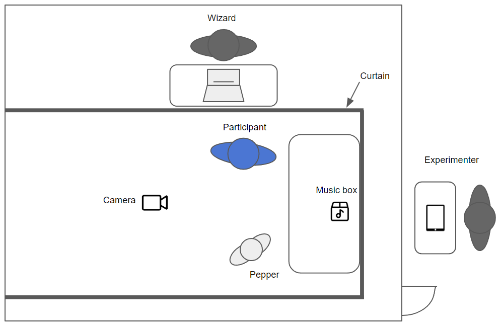b. Test
\section{Evaluation Method}
\subsection{Participants}
Thirty University students (from the Netherlands) participated in the experiment (recruited through social media advertisements or on-site recruitment). The participants were randomly divided equally into two groups, with 15 being placed in the machine-like robot condition and the other 15 being placed in the human-like robot condition. The average age was 24.8 years old (SD = 4.8).
\subsection{Procedure}
The set-up of the experiment can be seen in Figure \ref{setup1}. A Wizard of Oz setup was used to control the dialogue. It took roughly 15 minutes to complete the experiment. The experimenter began by giving a brief introduction and asking the participant to sign the informed consent. Then they were instructed to take a seat on the chair (see Figure \ref{setup}) and informed that the experiment would shortly begin.

The experimenter would now activate the robot and launch the experiment, then robot started with an introduction and then asked the participants for their profile information. Once the profile is created, the robot helped the participant choose a song that they know. Once the selection was made, the song was played and the robot started dancing. At the same time, the robot asked general questions about the music. When the dancing stopped, the robot asked for some memories related to the song. The robot would try to ask for more information about memory. If the participant had already been asked twice about memory, the robot would end the conversation. The participants were given a questionnaire once it was completed.
\subsection{Measures}
Two forms of data were gathered during the experiment: video records of the experiment and the follow-up questionnaire.
